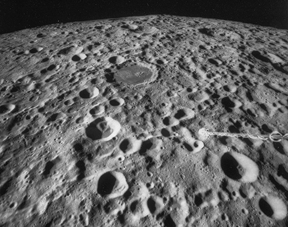Centauri Dreams has talked often about what may be the main driver for deep space exploration — the need to protect a vulnerable Earth from catastrophic asteroid or comet strikes. Ongoing work to understand how such impacts fit into the history of the Solar System is revealing much about their nature. Now a team of University of Arizona and Japanese scientists has uncovered the culprits in the massive bombardment of the early Solar System some 3.9 billion years ago: main belt asteroids like those now found between Mars and Jupiter.
And here’s what’s intriguing. The objects that have been cratering various planets since that era of the so-called Late Heavy Bombardment are a different species. Now it is the Near-Earth Asteroids (NEAs) that pose the greatest threat. UA Professor Emeritus Robert Strom and colleagues report their findings in the article, “The Origin of Planetary Impactors in the Inner Solar System,” which runs in the September 16 issue of Science. From a University of Arizona press release:
“One thing this says is that the present-day size-distribution of asteroids in the asteroid belt was established at least as far back as 4 billion years ago,” UA planetary scientist Renu Malhotra, a co-author of the Science paper, said. “Another thing it says is that the mechanism that caused the Late Heavy Bombardment was a gravitational event that swept objects out of the asteroid belt regardless of size.”

Thus we get a sharper picture of Solar System formation. Not long after they were formed, Jupiter and the gas giant planets would have swept up planetary debris all the way out to the Kuiper Belt. The process would have caused Jupiter to lose energy and move into a closer orbit to the Sun, creating strong gravitational effects on the asteroid belt and flinging many objects into the inner Solar System. A sampling of Apollo lunar materials has demonstrated that asteroids account for 80 percent of lunar impacts.
Image: An Apollo-era image of the lunar highlands. The new study by Strom, Malhotra, Kring and their Japanese colleagues indicates this terrain was bombarded mostly by asteroids – not comets – that were flung into the inner solar system when the asteroid belt was destabilized by migrating giant planets. The Earth was similarly bombarded but geological activity has erased most evidence of that bombardment. (Credit: NASA).
Comets, on the other hand, seem to have played a minor role in inner Solar System impacts, and in contrast to some views, may have contributed only as much as 10 percent of the Earth’s supply of water. And note this key finding with direct relevance to the emergence of life, citing the work of UA planetary scientist David A. Kring:
Kring also has developed a hypothesis that suggests that the impact events during the Late Heavy Bombardment generated vast subsurface hydrothermal systems that were critical to the early development of life. He estimated that the inner solar system cataclysm produced more than 20,000 craters between 10 kilometers to 1,000 kilometers in diameter on Earth.
Centauri Dreams‘ take: In terms of our own future, it’s the small, Earth-crossing asteroids nudged out of the main belt that pose the greatest threat. These hard to spot, fast-moving objects have accounted for all the cratering on inner planetary surfaces since the bombardment 3.9 billion years ago, and should continue to impel our push into the outer Solar System.
It’s fascinating to consider that after the period of the Late Heavy Bombardment, the surface of the Earth was so completely changed that no feature older than 3.9 billion years can be dated by cratering. But the UA team’s work seems to show that if oceans did exist earlier than 3.9 billion years ago (and there is geological evidence for this), those oceans would have been vaporized by the asteroid impacts. We often think of asteroid bombardment as inimical to life, but it may turn out to have actually set the stage for its emergence.

